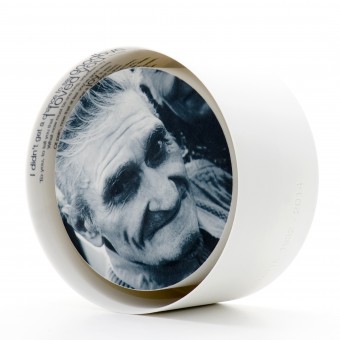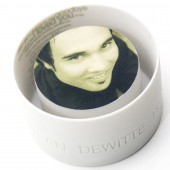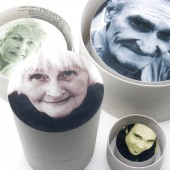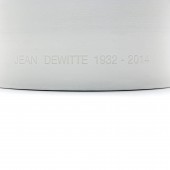
| THE AWARD |
| CATEGORIES |
| REGISTRATION |
| SUBMIT YOUR WORK |
| ENTRY INSTRUCTIONS |
| TERMS & CONDITIONS |
| PUBLICATIONS |
| DATES & FEES |
| METHODOLOGY |
| CONTACT |
| WINNERS |
| PRESS ROOM |
| GET INVOLVED |
| DESIGN PRIZE |
| DESIGN STORE |
| THE AWARD | JURY | CATEGORIES | REGISTRATION | PRESS | WINNERS | PUBLICATIONS | ENTRY INSTRUCTIONS |
Unspoken Words Ashurn by Tinne Debruijne |
Home > Winners > Design #33740 >Interview |
 |
|
FS: What is the main principle, idea and inspiration behind your design?
TD: Saying goodbye to someone precious. The pain The sadness The sudden absence and total void. Unanswered questions and fear of the unknown. "I still have so much to tell you."
FS: What has been your main focus in designing this work? Especially what did you want to achieve?
TD: The focus is on the ‘unspoken words’ in this collection of urns, through which those left behind have the chance of giving the deceased a last message. Unsaid. Unexpressed. Words, feelings, promises. Now brought to life in the intimacy of this piece of art. The portrait distinguishes the identity of the receptacle containing the ashes. A lasting and personal manner to remind those who have meant so much to us.
FS: What are your future plans for this award winning design?
TD: Selling internationally and establishing a broad network.
FS: How long did it take you to design this particular concept?
TD: 13 years from 1st idea to complete quality production and finding good partners.
FS: Why did you design this particular concept? Was this design commissioned or did you decide to pursuit an inspiration?
TD: It grew from a personal experience, in which a young woman's sorrow and the words ‘there is so much I still want to tell you’ had such a deep impact on me and moved me to the very core. I started designing a range of personalised urns to yet capture these words soon after.
FS: Is your design being produced or used by another company, or do you plan to sell or lease the production rights or do you intent to produce your work yourself?
TD: I work together with '3dmatic' to produce the urns. I keep all copyrights in every stage of the design and production.
FS: What made you design this particular type of work?
TD: A personal experience of loosing a beloved one made me search for a more personalized and more beautiful ash urn. I discovered that there is a huge demand from funeral companies for contemporary designs. They need new and modern ideas. Most of the urns look the same and lack creativity and design. My urns are about celebrating someone's life.
FS: Where there any other designs and/or designers that helped the influence the design of your work?
TD: No, no other designers influenced my work.
FS: Who is the target customer for his design?
TD: People who want something precious, personalized, a beautiful piece of art for there beloved one.
FS: What sets this design apart from other similar or resembling concepts?
TD: This design is completely personalized. These last words between the deceased and the people left behind. In Belgium and in other parts of Europe people want to have the ash urn at the ceremony itself. 3D printing technology makes it possible to be there since we can print in a couple of hours. So, emotionally it's very important to be present at the funeral, it helps in the mourning process.
FS: How did you come up with the name for this design? What does it mean?
TD: UNSPOKEN WORDS: The focus is on the ‘unspoken words’ in this collection of urns, through which those left behind have the chance of giving the deceased a last message. Unsaid. Unexpressed. Words, feelings, promises. Now brought to life in the intimacy of this piece of art. The portrait distinguishes the identity of the receptacle containing the ashes. A lasting and personal manner to remind those who have meant so much to us.
FS: Which design tools did you use when you were working on this project?
TD: First I just used paper and pencil. Later on I used Illustrator and my wheel to develop and research the right proportions and techniques.
FS: What is the most unique aspect of your design?
TD: Personalization and the simple double shape, it creates a space of intimacy where all the tenderness and love that those who remain feel for the departed person is modestly expressed.
FS: Who did you collaborate with for this design? Did you work with people with technical / specialized skills?
TD: In the final design I worked together with 3Dmatic to develop a sustainable and faster technique.
FS: What is the role of technology in this particular design?
TD: Fast delivery of personalized design. A handmade design takes up to 4 to 6 weeks to deliver and this was for a lot of people a showstopper which made them choose for mass produced (unpersonalized) designs. With 3d printing the urn can be present at the ceremony.
FS: Is your design influenced by data or analytical research in any way? What kind of research did you conduct for making this design?
TD: No
FS: How did you decide to submit your design to an international design competition?
TD: The quality of my design is very high and there is a huge demand for contemporary urns, coffins and services in the funeral world. My work is an excellent combination of personalization, design and technique.
FS: What did you learn or how did you improve yourself during the designing of this work?
TD: I learned that at one point you need to get connected with the right people with the same mindset. As a designer and artist, at a certain point, you need to trust others that can be a extra value to your project, still staying true to your identity.
FS: Thank you for providing us with this opportunity to interview you.
A' Design Award and Competitions grants rights to press members and bloggers to use parts of this interview. This interview is provided as it is; DesignPRWire and A' Design Award and Competitions cannot be held responsible for the answers given by participating designers.
| SOCIAL |
| + Add to Likes / Favorites | Send to My Email | Comment | View Press-Release |




